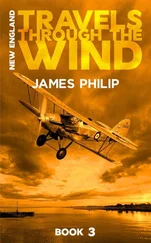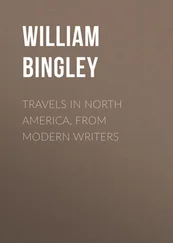Bernhard - Travels Through North America, During the Years 1825 and 1826. v. 1-2
Здесь есть возможность читать онлайн «Bernhard - Travels Through North America, During the Years 1825 and 1826. v. 1-2» — ознакомительный отрывок электронной книги совершенно бесплатно, а после прочтения отрывка купить полную версию. В некоторых случаях можно слушать аудио, скачать через торрент в формате fb2 и присутствует краткое содержание. Жанр: foreign_antique, foreign_prose, Путешествия и география, на английском языке. Описание произведения, (предисловие) а так же отзывы посетителей доступны на портале библиотеки ЛибКат.
- Название:Travels Through North America, During the Years 1825 and 1826. v. 1-2
- Автор:
- Жанр:
- Год:неизвестен
- ISBN:нет данных
- Рейтинг книги:4 / 5. Голосов: 1
-
Избранное:Добавить в избранное
- Отзывы:
-
Ваша оценка:
- 80
- 1
- 2
- 3
- 4
- 5
Travels Through North America, During the Years 1825 and 1826. v. 1-2: краткое содержание, описание и аннотация
Предлагаем к чтению аннотацию, описание, краткое содержание или предисловие (зависит от того, что написал сам автор книги «Travels Through North America, During the Years 1825 and 1826. v. 1-2»). Если вы не нашли необходимую информацию о книге — напишите в комментариях, мы постараемся отыскать её.
Travels Through North America, During the Years 1825 and 1826. v. 1-2 — читать онлайн ознакомительный отрывок
Ниже представлен текст книги, разбитый по страницам. Система сохранения места последней прочитанной страницы, позволяет с удобством читать онлайн бесплатно книгу «Travels Through North America, During the Years 1825 and 1826. v. 1-2», без необходимости каждый раз заново искать на чём Вы остановились. Поставьте закладку, и сможете в любой момент перейти на страницу, на которой закончили чтение.
Интервал:
Закладка:
The breakwater suffered exceedingly by the terrible storm of the 22d and 23d of November, 1824. It is now to be rendered more permanent in the following manner: – The stones most exposed to the waves are to be hewed and clamped together with iron. I fear, however, that this work will also be destroyed, unless a couple of perpendicular dams be built touching the principal dam, to break the force of the waves before they reach the latter. The old works are in so ruinous a condition that we were nearly wrecked upon them. On this account we stood farther off, and went on board of the Thetis frigate to pay a visit to Sir John Phillimore. Sir John, in honour of our presence, displayed all his flags. The marines, with their officers, stood near the mizen-mast, and with the crew marched round the deck; some of the latter were armed with pikes, some with sabres, and others with battle-axes. I was delighted with the perfect order and neatness which universally appeared. Both cabins were very elegantly arranged and ornamented with mahogany. As we took leave, the yards were manned, and a salute given. It was now high water, and we passed between Drake’s Island and Mount Edgecumbe through a passage called the Bridge , which is dangerous on account of rocks. We touched twice upon them without injury, as fortunately the wind was slight: we landed at the beautiful stone stairs of Mount Wise .
On the day following, I visited the Marine Hospital, in company with Sir John Phillimore. This is an admirably managed and richly endowed institution. 3 3 For minute description of this hospital, see Dupin.
The building was begun during the seven years war. It can accommodate two thousand sick or wounded: we found but about seventy persons in the hospital, and among these some officers and midshipmen. It appeared to me that the plan of having eight separate buildings, each three stories high, was a very good one, as the spreading of contagious diseases, or of a conflagration, can be so much more easily prevented. Each ward contains sixteen bedsteads, all of iron; the bedsteads for the officers are of wood, and furnished with curtains. There are also beds in the wards for the nurses, which, in all the English marine hospitals, are females, whose attendance is preferred for its greater gentleness to that of male assistants. The sick are brought from the ships to the hospital by water, and go, or are carried up a wide stone stair to the receiving office. They are then stripped and bathed in the hospital to which they are sent, and their clothes are marked, and kept in a particular magazine. An iron crane is employed to land those who are badly wounded. In all the wards, as well as in the different store-rooms, and the apothecary room, the greatest order and cleanliness is observable.
The church does not appear to me to be arranged in correspondence with the rest of the establishment. It is small, and has a store-room on the first floor, so that the patients find it occasionally very troublesome to attend upon worship. A covered colonnade surrounds the quadrangular court-yard which encloses the building, under which the patients, in bad or hot weather, can exercise. The middle of the court-yard is a well-kept grass-plot.
For maniac patients there is a proper house, built remote from the others. The wash-house stands also aloof. In bad weather, the wash is dried by steam. The wash is hung upon frames, which fold together, and may be run in and out for the convenience of taking off the dried pieces and adding the wet. Eight of such frames may be folded together and occupy a very small space. There is also a very appropriately managed bathing-house for the use of the patients, in which they may not only have all sorts of baths, but with the greatest convenience. The superintendents, physicians, and officers, have their dwellings in front of the hospital, in a spacious place planted with trees. The commissioner at the head of the institution, is Captain Creyke , a pensioner, eighty years old, who first served at sea in 1759, and accompanied Commodore Wallis in his first voyage round the world. Before we left the hospital we took a glance at his beautifully situated and tastefully arranged house. We then visited the Plymouth Library, established by subscription about twenty years ago, which does not yet appear to be very rich. The establishment consists of three apartments, the book-room, the reading-room, and the director’s meeting-room. The library serves properly for a reading club, like our literary society at Ghent. On the 10th, I dined in company with Admiral Saumarez and Sir John Phillimore, with the officer’s mess of the twenty-fourth regiment of infantry, commanded by Lieutenant Colonel Fleming.
On the ensuing day, the admiral accompanied us to Mount Edgecumbe Park; this is a truly noble situation, yet, in time of war, as this position is indispensable to the defence of the dock-yard, it is necessary to convert it into a fortification. The ground is very advantageously employed in the disposition and embellishment of the park: it is not encumbered with buildings; the green and bath-house are the principal, and in the construction of these the marble of the vicinity has been very happily used. The trees are chiefly beech, some of them apparently very old, sickly, and injured by the sea-air. There are also three great cedars of Lebanon, which do not thrive well in an English park. The Castle of Mount Edgecumbe is ancient, and externally resembles a state prison; we did not examine it internally. We saw the monument of Lady Mount Edgecumbe, who died in 1806, to whom the park is indebted for most of its improvements. It is told of her that she was twice buried; the first time she remained three days in a vault, lying in her coffin, and was aroused by a thief cutting off her finger to steal a ring: she left the grave, took refuge in a neighbouring house, made herself known, and was reconveyed to her castle, where she subsequently lived several years and gave birth to children. Relata refero. On the sea-shore, near the bridge that we passed two days since, Lord Mount Edgecumbe has erected a battery of twenty-one iron six pounders, which he fires upon all festival occasions. We embarked at this battery to visit the rock lying in front of Stonehouse, called Devil’s Point, which is to be partly levelled to make room for a new victualling office. The work is scarcely begun. A cellar was dug out of the rock and a wall built in the sea to support the foundation. This was effected by means of a diving-bell. The bell containing the workmen, remained while we were present, nearly four hours under water. Government intends to construct a new water-reservoir at this place, which will probably render that of Bovisand unnecessary. Drinking water is brought to Plymouth in iron pipes from Dartmouth, which is eighteen miles distant, so that in time of war the supply might readily be cut off.
Next day I went by land to visit the Castle of Saltroun , situated six English miles from Plymouth at the end of Catwater, and belonging to Lord Morlay, who resides in London. The road passes through a delightful valley; on the right is Catwater, to the left the ruins of castles on the heights: there are also here numerous terrace-shaped strawberry beds, the fruit of which is exceedingly good. Close to the entrance of the park we crossed the Catwater upon an old, very narrow, stone bridge of five arches. Through the park, a beautiful road leads from the valley to the loftily situated castle. It rained excessively, and as we could see nothing from the park, we restricted ourselves to the castle, which was built probably about sixty years ago, and has a very large apartment in the basement. A very spacious vestibule leads to the library, in which are a number of splendid family portraits and pictures of some once celebrated actresses. The best picture is a portrait of Sir Joshua Reynolds, painted by himself. Four plaster columns resembling verd-antique are excellent imitations. From the library a small apartment opens into the picture gallery. In both rooms are several paintings by Carlo Dolce, Andrea Del Sarto, Teniers, Wouvermans, Ostade, Kuyp, Vandermeulen, &c. I cannot assert that all these are original paintings. In the parlour, ball-room, and dining-hall, there are also numerous pictures. Some of these are attributed to Angelica Kauffman, others to Reubens, Van Dyke, Sassoferrato, Guido Rheni, Titian, Ruysdael, Parmegiano, &c. However, I have seen the originals of many of them at Antwerp and Ghent, and of one of the Parmegianos in Windsor Castle. Among the statues and busts, I especially remarked a copy of the Florentine Venus, by Canova, and a copy of Hebe by the same master. The staircase of the castle is fine, and adorned with pictures by Angelica Kauffman. The mantel-pieces, all of Italian marble, ornamented with bas-reliefs , are also very remarkable. The bad weather accompanied us throughout our return to Plymouth. On this occasion I remarked that the pavement was taken up in several streets, and Macadamized, which is much better for the horses and houses.
Читать дальшеИнтервал:
Закладка:
Похожие книги на «Travels Through North America, During the Years 1825 and 1826. v. 1-2»
Представляем Вашему вниманию похожие книги на «Travels Through North America, During the Years 1825 and 1826. v. 1-2» списком для выбора. Мы отобрали схожую по названию и смыслу литературу в надежде предоставить читателям больше вариантов отыскать новые, интересные, ещё непрочитанные произведения.
Обсуждение, отзывы о книге «Travels Through North America, During the Years 1825 and 1826. v. 1-2» и просто собственные мнения читателей. Оставьте ваши комментарии, напишите, что Вы думаете о произведении, его смысле или главных героях. Укажите что конкретно понравилось, а что нет, и почему Вы так считаете.












